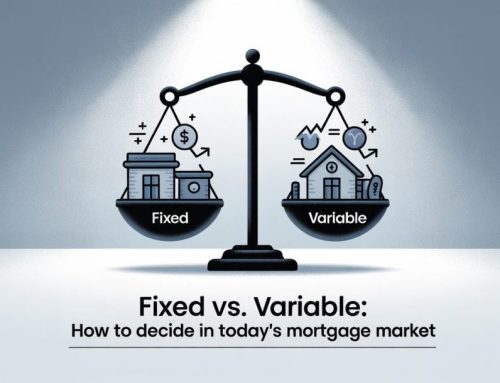Since the start of the pandemic, mortgage rates have been on a wild, fast and furious roller coaster. Back in early March, they were falling so fast they were hard to keep track of. I would quote a rate for a client, only for a lower rate to come out the next day, or even the same afternoon. It was madness!
Just as quickly as they were falling, they started rocketing back up, which came completely out of left field. They have since peaked and have fortunately come down quite a bit off their high.
The biggest reasons for the rapid increase were both fear in the marketplace, as well as liquidity. The fear was bred by volatility, which has been extreme and unpredictable. Fixed mortgage rates are determined by bond yields. If the yields were to shoot up drastically overnight, then this can leave a lender caught with their pants down if they don’t increase rates fast enough. On March 13th, we saw the bond yields shoot up by a whopping and unprecedented 43% in a single day. You can see why lenders might be a little fearful.
Liquidity refers to the availability of funds to be lent out. When liquidity becomes a concern, rates have to increase due to the decline in availability of mortgage funds.
The liquidity concerns were relieved with the introduction of government stimulus. The volatility concerns however remain. For this reason, mortgage lenders need to be a bit more conservative when it comes to discounting their rates.
Mortgage lenders are currently able to move rates down substantially from where they are today…however they are reticent to do so.
Increasing Discounts on Variable Rate Mortgages
It was just a couple weeks ago when it was looking as though variable rates were going to shoot up all the way to prime +1.00%, which is what happened after the 2008 financial crisis. Fortunately, it’s becoming apparent that we will not see a repeat of this. Things can change quickly however, as they have over the past two months.
Variable rates had increased all the way up to prime (currently 2.45%), with multiple lenders into prime + territory. The discounts have started to make a comeback however, and as long as there are no more concerns with liquidity, we’ll likely see some larger discounts soon.
Will we start to see prime -1.00% again?
It’s possible that we may see it come somewhat close, however lenders will need to feel more comfortable with the volatility before this happens. If the volatility were not a concern, then variable rates would likely be around prime -0.70% to prime -0.95%. (1.50% – 1.75%).
As of now, the lowest variable ranges from prime -0.40% to prime -0.15% (2.05% – 2.30%).
Lower Fixed Mortgage Rates?
It’s not just the variable rate mortgages that have room to go lower, but the fixed rates as well. Given that bond yields have now reached a new record low, 5 year fixed mortgage rates should be below 2%. There was a chance of us seeing this unprecedented price point heading into mid–March before the yields turned back upwards.
Volatility is keeping fixed rates artificially high at the moment. If volatility starts to subside, and if bond yields remain at current levels, then it’s possible that we could see sub 2% 5 year fixed rates for the first time in history.
As volatility becomes less of a concern, it’s likely we’ll start seeing the bond yields rise as well, which would then result in less downward pressure on fixed rates. Time will tell and anything can happen.
The lowest 5 year fixed rate as of today range from 2.29% to 2.69%, depending on your situation.
Paul Meredith is the author of the Amazon #1 best selling book, Beat the Bank
– How to Win The Mortgage Game in Canada, and has ranked as one of the top
75 mortgage brokers in Canada since 2016. He was a finalist for Mortgage
Broker of the Year in 2018, and can be seen as the exclusive mortgage broker on
season two of TV’s Top Million Dollar Agent.








Like!! Thank you for publishing this awesome article.
Thank you ever so for you article post.